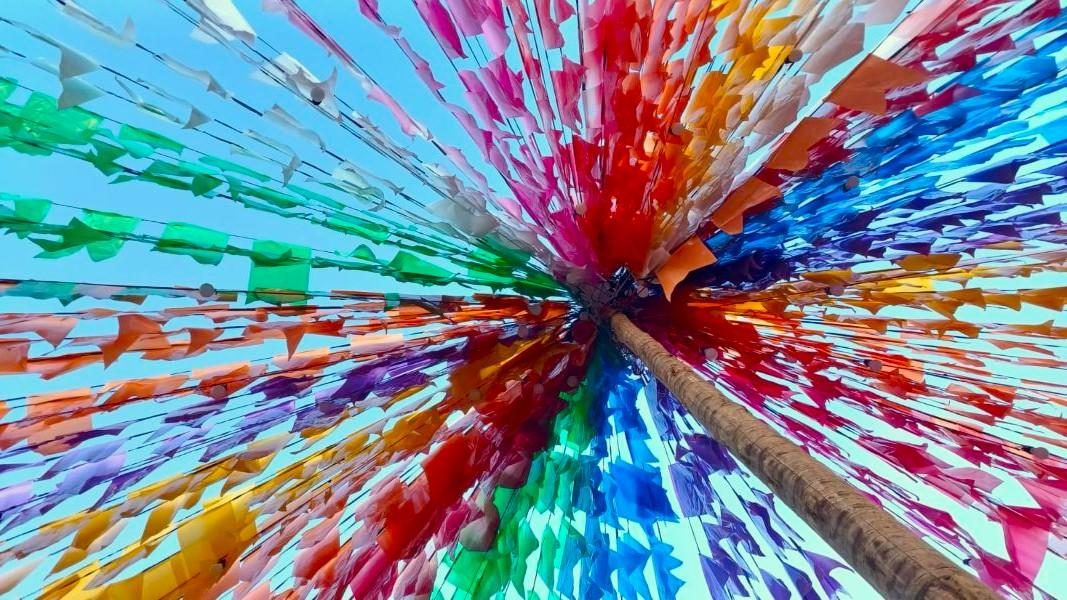São João in Northeastern Brazil: When June Becomes a Cultural Celebration

What is São João?
São João is one of Brazil’s largest and most colorful folk festivals. Celebrated throughout June—especially in the country’s Northeast - it was originally a Catholic festivity in honor of Saint John the Baptist. Over time, it has transformed into a vibrant spectacle of culture, music, and rural traditions. A real insider tip for a Brazil vacation.
When and Where Is It Celebrated?
The main festivities take place between June 23 and 29, with June 24 being the central date. Some of the most famous celebrations occur in:
• Campina Grande (Paraíba) – one of the world’s largest São João festivals
• Caruaru (Pernambuco) – rich in tradition and home to a massive Forró music festival
• Salvador (Bahia) – authentic, rustic, and full of charm
• Aracaju (Sergipe) – Forró, quadrilhas, and a lively atmosphere
Smaller towns often provide even more authentic experiences, where a strong sense of community is at the heart of the celebrations.
How Is It Celebrated?
1. Forró Dancing and Music
Forró is the signature music of São João, played with accordion, triangle, and zabumba drums. Most towns set up large party areas known as arraiais, where people dance in traditional attire. Brazilians are known for their hospitality, and chances are high that someone will be happy to give you a spontaneous crash course in Forró dancing.
2. Quadrilha
The quadrilha, Portuguese for "dance group," is a traditional group dance performed during the Festas de São João. Especially in rural areas and in the Northeast of Brazil, it is a central cultural element of the celebrations. A quadrilha is danced in pairs within a larger group – often with a choreographed routine and a humorous, theatrical reenactment of a rural wedding. Dancers wear colorful, country-style clothing, often exaggerated and performed with a playful spirit.
Corn-based dishes take center stage: canjica, pamonha, and milho cozido (sweet corn pudding, cooked corn paste, boiled corn on the cob) are staples. In addition, there are sweet and savory specialties, often based on family recipes, and also amendoim cozido – boiled peanuts in salted water, also a very popular snack. If you are curious to experience traditional Brazilian cuisine, this is the perfect opportunity.
4. Traditional Clothing
Men wear straw hats and checked shirts; women dress in colorful, ruffled dresses—an homage to Brazil’s rural lifestyle and heritage.
5. Fireworks and Bonfires
Fires and vibrant fireworks light up the night. They symbolize purification, joy, and the welcome arrival of the rainy season. Especially in smaller towns in the countryside, you'll still find many small bonfires scattered throughout the streets in front of people's homes.
Why Is São João Interesting for Travelers?
São João offers an excellent opportunity to explore Brazil beyond the usual tourist hotspots. It opens a window into the country’s rural culture, musical heritage, and culinary traditions - right in the heart of welcoming communities.
June also brings ideal weather to the Northeast: dry, warm conditions with fewer tourists compared to Carnival season. It’s a real insider tip for your[b] Brazil trip[/b] and an unforgettable experience.
Exclusive Access with Aventura do Brasil
At Aventura do Brasil, we can include authentic São João experiences in your travel itinerary upon request. We emphasize respectful encounters with local culture - enabling you to take part in the celebrations as a guest, not merely as a spectator.
More Than a Festival – A Cultural Key
São João proves that Brazil’s cultural diversity goes far beyond samba and Carnival. Those who wish to truly understand the country’s soul should experience this celebration. It’s a festival of the people, of roots—and a living piece of Brazilian history.
Sources: https://saojoaonabahia.com.br, https://www.ba.gov.br/sufotur/sao-joao-2025/convenios, https://www.bahiaterra.com/posts/festa-junina-na-bahia

